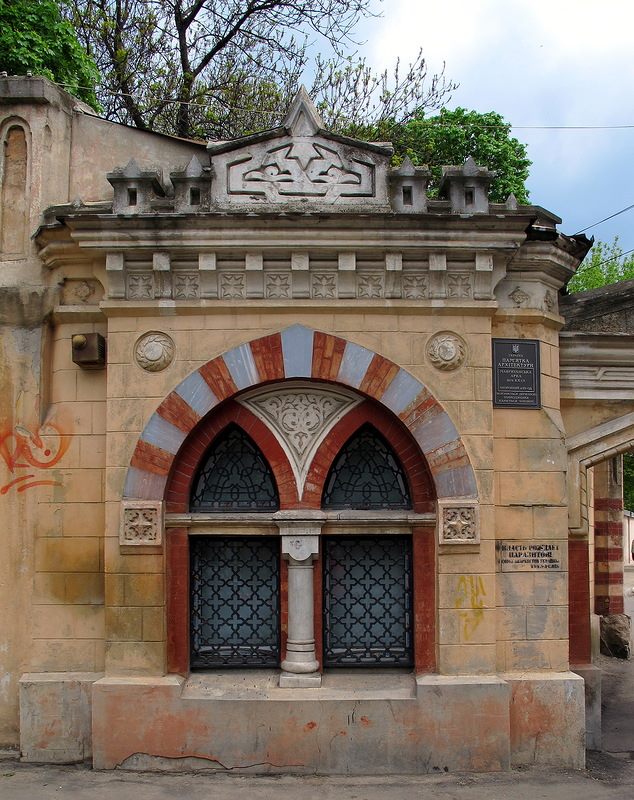#280. Eastern Motif: Elegant Moorish Facade with Horseshoe Arch
Before us stands a remarkable specimen of architecture with pronounced Eastern style elements, combining Moorish and Byzantine motifs. The facade is a small stone structure with a characteristic horseshoe-shaped arched entrance, framed by striped masonry of contrasting colored stones — red and light gray. This technique creates an effective visual rhythm and emphasizes the architectural significance of the portal.
The upper part of the facade is crowned with a decorative pediment featuring an intricate ornament, which gives the structure elegance and completeness. On both sides of the pediment are miniature decorative turrets, reminiscent of fortress architecture elements. Particularly noteworthy are the metal wrought iron grilles on the windows with geometric patterns typical of Islamic art.
The facade is built of light sand-colored stone, characteristic of Mediterranean and Middle Eastern architecture. The use of natural stone with its natural texture and color nuances makes the building an organic element of the surrounding landscape. When designing a modern facade, similar techniques can be adapted, using natural materials and contrasting color accents to create an expressive architectural image.
On the right side of the facade, there is a commemorative plaque, suggesting the historical or cultural significance of this structure. Despite some traces of time and graffiti, the building maintains its architectural dignity and continues to demonstrate the craftsmanship of its creators, who skillfully combined functionality with aesthetic expressiveness.
